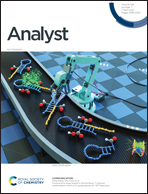Microfluidics for sepsis early diagnosis and prognosis: a review of recent methods
Abstract
Sepsis is a complex disorder of immune system response to infections that can be caused by a wide range of clinical contexts. Traditional methods for sepsis detection include molecular diagnosis, biomarkers either based on protein concentration or cell surface expression, and microbiological cultures. Development of point-of-care (POC) instruments, which can provide high accuracy and consume less time, is in unprecedented demand. Within the past few years, applications of microfluidic systems for sepsis detection have achieved excellent performance. In this review, we discuss the most recent microfluidic applications specifically in sepsis detection, and propose their advantages and disadvantages. We also present a comprehensive review of other traditional and current sepsis diagnosis methods to obtain a general understanding of the present conditions, which can hopefully direct the development of a new sepsis roadmap.

- This article is part of the themed collection: Recent Review Articles


 Please wait while we load your content...
Please wait while we load your content...